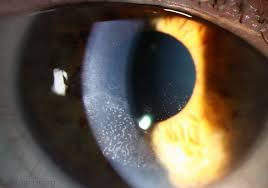Table of Contents
ToggleIf you’re an aspiring pilot, you’ve likely daydreamed about the exhilaration of taking to the skies. However, for many, the dream of becoming a pilot comes with a significant hurdle—imperfect vision. For years, individuals with less-than-perfect eyesight were automatically disqualified from pursuing a career in aviation.
Thanks to advancements in medical technology like LASIK (Laser-Assisted In Situ Keratomileusis), many people with vision issues can now achieve near-perfect vision. But here comes the big question—can one join an aviation institute after LASIK?
In this detailed and informative blog post, we’ll explore everything you need to know about LASIK and its implications for aspiring pilots.
Understanding LASIK
What is LASIK?
LASIK is a form of refractive eye surgery designed to rectify prevalent vision disorders, such as myopia (nearsightedness), hyperopia (farsightedness), and astigmatism.
The procedure involves reshaping the cornea to enable light entering the eye to be properly focused onto the retina, thereby improving vision.
How Does LASIK Work?
LASIK surgery involves the following steps:
- Creating a Flap: A small flap is meticulously crafted on the corneal surface utilizing either a microkeratome or a femtosecond laser.
- Reshaping the Cornea: The surgeon then folds back the flap to access the underlying cornea and removes some corneal tissue using an excimer laser. This laser reshapes the cornea to correct the specific vision problem.
- Repositioning the Flap: Once the cornea has been reshaped, the flap is repositioned to cover the area from which the corneal tissue was excised. Subsequently, the cornea undergoes a natural healing process over time.
Benefits of LASIK
- Quick Recovery: Most patients experience a significant improvement in vision within 24 to 48 hours.
- Long-lasting Results: The effects of LASIK are generally long-lasting, often eliminating the need for glasses or contact lenses.
- Minimal Discomfort: The procedure itself is relatively painless, although some patients may experience mild discomfort during the recovery period.
LASIK and Aviation Regulations
Regulatory Bodies and Their Guidelines
Aviation is a highly regulated field, with stringent medical requirements to ensure the safety of pilots and passengers alike.
Different countries have different regulatory bodies that govern aviation medical standards.
Here are some key organizations and their general guidelines regarding LASIK:
- Directorate General of Civil Aviation (DGCA) – India:
The DGCA mandates a six-month waiting period post-LASIK before a pilot can be considered for medical certification. The candidate must provide a detailed medical report confirming stable vision and the absence of any complications.
- Federal Aviation Administration (FAA) – USA:
The FAA allows LASIK for civilian pilots, provided they meet specific criteria. Pilots must undergo a comprehensive eye examination and demonstrate stable vision post-surgery. The FAA requires a period of up to three months for the eyes to stabilize before certification.
- Civil Aviation Authority (CAA) – UK:
The CAA also permits LASIK, with similar conditions to the FAA. Pilots must wait three months post-surgery and provide medical evidence of stable and acceptable visual acuity.
Common Requirements Across Regulatory Bodies
Regardless of the country, here are some common requirements for pilots who have undergone LASIK:
- Stable Vision: Vision must be stable and within acceptable limits for at least three to six months post-surgery.
- Absence of Complications: There should be no significant complications or side effects that could impair visual performance.
- Comprehensive Eye Examination: Pilots must undergo a thorough eye examination by an ophthalmologist to confirm the success and stability of the surgery.
Implications for Aspiring Pilots
Pros of LASIK for Aspiring Pilots
1. Better Visual Acuity:
One of the most notable benefits of LASIK is the enhancement of visual acuity. This can enhance a pilot’s ability to read instruments accurately, identify visual cues, and spot other aircraft.
2. Increased Confidence:
Improved vision can boost a pilot’s confidence, knowing they can rely on their eyesight without the need for glasses or contacts.
3. Broader Opportunities:
With corrected vision, pilots can meet the medical requirements of various aviation authorities, opening up more opportunities in both commercial and private aviation.
Cons and Considerations
1. Initial Cost:
LASIK can be costly, and many insurance plans do not cover the procedure. However, considering the long-term benefits, many find it a worthwhile investment.
2. Recovery Period:
The mandatory waiting period of three to six months post-surgery can delay your application to an aviation institute. Planning your surgery well in advance is crucial.
3. Potential Side Effects:
While LASIK is generally safe, there are potential side effects such as dry eyes, glare, halos, and night vision issues. It is crucial to engage in a discussion about these risks with your ophthalmologist.
Steps to Take if You’re Considering LASIK
1. Consult with an Ophthalmologist:
Schedule a consultation with an experienced ophthalmologist to discuss your suitability for LASIK. They will perform a comprehensive eye examination and explain the risks and benefits.
2. Research Aviation Regulations:
Familiarize yourself with the specific medical requirements of the aviation authority in your country. Make sure you clearly understand the waiting period and the required documentation.
3. Plan Your Surgery:
If you decide to proceed with LASIK, plan your surgery well in advance to account for the mandatory recovery period. This will ensure you meet the medical requirements on time.
4. Prepare for Post-Surgery Care:
Follow your ophthalmologist’s post-surgery care instructions diligently. Attend all follow-up appointments to monitor your recovery and vision stability.
5. Gather Documentation:
Keep all medical reports, eye examination results, and any other relevant documentation to provide to the aviation authority during your medical certification process.
Looking Ahead
For aspiring pilots with vision issues, LASIK offers a promising solution to achieve the necessary visual acuity for a successful aviation career. While there are specific regulations and waiting periods to consider, the benefits of improved vision and broader opportunities make LASIK a worthwhile option.
If you’re considering LASIK, take the time to consult with an ophthalmologist, understand the aviation regulations in your country, and plan your surgery accordingly. With the right preparation and care, you can turn your dream of becoming a pilot into reality.
Ready to take the next step? Schedule a consultation with an experienced ophthalmologist today and start your journey toward clearer skies.













